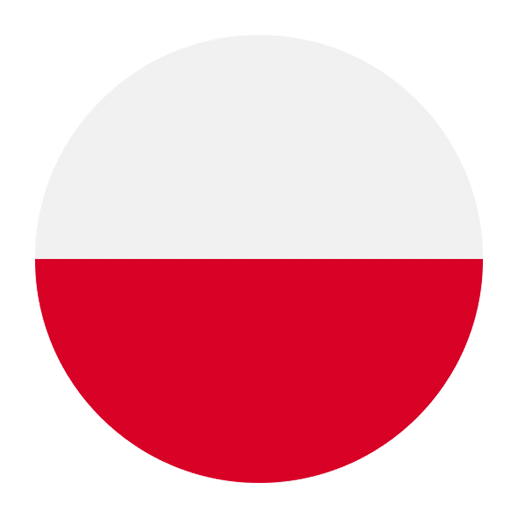Learning Polish can be a rewarding experience, opening doors to understanding a rich culture and history. One of the foundational aspects of mastering Polish is understanding how nouns change from singular to plural. Polish, like many Slavic languages, has its own set of rules and exceptions when it comes to pluralizing nouns. This guide aims to provide a comprehensive overview of how to navigate singular and plural nouns in Polish, making your language learning journey smoother and more enjoyable.
The Basics of Singular and Plural Nouns in Polish
In English, forming the plural of a noun is often as simple as adding an “s” or “es” to the end of the word. However, Polish follows a more complex set of rules that depend on the gender of the noun, the noun’s ending, and other grammatical nuances. Polish nouns are classified into three genders: masculine, feminine, and neuter. Each gender has its own set of rules for forming plurals.
Masculine Nouns
Masculine nouns in Polish can be further divided into animate and inanimate categories. Animate nouns refer to living beings, such as people and animals, while inanimate nouns refer to objects and abstract concepts.
Animate Masculine Nouns: These typically end in a consonant in their singular form. To form the plural, the most common change is to add “-i” or “-owie.”
– Example: “mężczyzna” (man) becomes “mężczyźni” (men).
– Example: “pies” (dog) becomes “psy” (dogs).
Inanimate Masculine Nouns: These also usually end in a consonant. The plural form often involves adding “-y” or “-e.”
– Example: “stół” (table) becomes “stoły” (tables).
– Example: “dom” (house) becomes “domy” (houses).
Feminine Nouns
Feminine nouns typically end in “-a” or a soft consonant. The plural forms of feminine nouns are usually formed by changing the ending to “-y,” “-e,” or “-i.”
– Example: “kobieta” (woman) becomes “kobiety” (women).
– Example: “książka” (book) becomes “książki” (books).
– Example: “noc” (night) becomes “noce” (nights).
Neuter Nouns
Neuter nouns often end in “-o,” “-e,” or “-ę” in their singular form. To form the plural, these endings typically change to “-a.”
– Example: “okno” (window) becomes “okna” (windows).
– Example: “dziecko” (child) becomes “dzieci” (children).
– Example: “zwierzę” (animal) becomes “zwierzęta” (animals).
Special Cases and Exceptions
As with any language, Polish has its fair share of irregularities and exceptions. Here are some special cases to watch out for:
Irregular Plurals: Some nouns do not follow the standard rules and have unique plural forms.
– Example: “człowiek” (person) becomes “ludzie” (people).
– Example: “dzień” (day) becomes “dni” (days).
Nouns with Different Meanings in Plural: Certain nouns change their meaning when they are pluralized.
– Example: “ręka” (hand) becomes “ręce” (hands), but “ręki” can mean “arms.”
– Example: “oko” (eye) becomes “oczy” (eyes), but “oka” can mean “eyes of a needle.”
Compound Nouns: When dealing with compound nouns, the pluralization rules can vary depending on the components of the noun.
– Example: “samolot” (airplane) becomes “samoloty” (airplanes).
– Example: “listonosz” (postman) becomes “listonosze” (postmen).
Tips for Mastering Plural Nouns in Polish
Mastering the plural forms of nouns in Polish can be challenging, but with practice and the right strategies, you can make significant progress. Here are some tips to help you along the way:
1. Practice Regularly: Consistent practice is key to retaining what you learn. Try to incorporate new plural nouns into your daily conversations or writing exercises.
2. Use Flashcards: Flashcards are an effective way to memorize plural forms. You can create your own or use pre-made sets available online.
3. Engage with Native Speakers: Practicing with native speakers will give you real-world experience and help you understand how plural nouns are used in context.
4. Read Polish Texts: Reading books, articles, and other written materials in Polish will expose you to the natural usage of plural nouns.
5. Listen to Polish Media: Listening to Polish music, podcasts, and videos can help reinforce your understanding of plural forms through auditory learning.
Common Mistakes to Avoid
Even advanced learners can make mistakes when it comes to pluralizing nouns in Polish. Here are some common pitfalls to watch out for:
1. Overgeneralizing Rules: While there are general patterns for forming plurals, not all nouns follow these rules. Be cautious of overgeneralizing and pay attention to exceptions.
2. Ignoring Gender: Remember that the gender of a noun plays a crucial role in determining its plural form. Always consider the gender when pluralizing.
3. Mispronunciation: Pronunciation can change slightly between singular and plural forms. Make sure to listen carefully and practice the correct pronunciation.
4. Confusing Similar Nouns: Some nouns have similar singular forms but different plural forms. Pay attention to these differences to avoid confusion.
Exercises to Practice Plural Nouns
To solidify your understanding, here are some exercises to practice forming plural nouns in Polish:
Exercise 1: Form the Plural
Convert the following singular nouns into their plural forms:
1. kot (cat)
2. książka (book)
3. okno (window)
4. człowiek (person)
5. noc (night)
Answers:
1. koty (cats)
2. książki (books)
3. okna (windows)
4. ludzie (people)
5. noce (nights)
Exercise 2: Fill in the Blanks
Choose the correct plural form to complete the sentences:
1. Mam dwa ____ (pies).
2. Na stole są trzy ____ (książka).
3. W domu jest wiele ____ (okno).
4. Spotkałem kilku ____ (człowiek).
5. W nocy widziałem dużo ____ (gwiazda).
Answers:
1. psy (dogs)
2. książki (books)
3. okien (windows)
4. ludzi (people)
5. gwiazd (stars)
Conclusion
Understanding the rules for singular and plural nouns in Polish is essential for effective communication. While the rules may seem complex at first, regular practice and exposure will help you internalize these patterns. Remember to pay attention to the gender of nouns, watch out for irregularities, and practice consistently. By doing so, you’ll find yourself becoming more confident and proficient in using Polish plural nouns. Happy learning!

